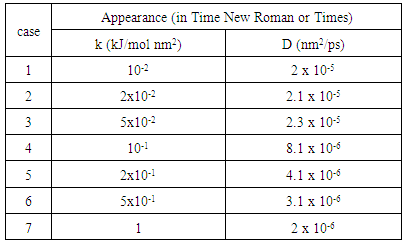| [1] | M.Y. Abdollahzadeh Jamalabadi, “Effects of micro and macro scale Viscous Dissipations with Heat Generation and Local Thermal Non-Equilibrium on Thermal Developing Forced Convection in saturated porous media”, Journal of Porous Media, (18) 9 (2015) 843-860. |
| [2] | M.Y. Abdollahzadeh Jamalabadi, “Joule Heating in Low-Voltage Electroosmotic with Electrolyte containing nano-bubble mixtures through Microchannel Rectangular Orifice”, Chemical Engineering Research and Design, 102 (2015) 407-415. |
| [3] | Ashkin, A., “Optical trapping and manipulation of neutral particles using lasers", Proc. Natl. Acad. Sci. USA, 94, 4853-4860, (1997). |
| [4] | Svoboda K., and Block S. M., "Biological applications of optical forces", Annu Rev Biophys Biomol Struct, 23, 247-85, (1994). |
| [5] | D. G. Grier. “A revolution in optical manipulation.” Nature 424, 810–816 (2003). |
| [6] | K. Visscher, S.M. Block, Versatile optical traps with feedback control, Methods in Enzymology 298 (1998) 460–489. |
| [7] | S. Dousti, J. Cao, A. Younan, P. Allaire, T. Dimond, "Temporal and Convective Inertia Effects in Plain Journal Bearings With Eccentricity, Velocity and Acceleration", Journal of tribology 134 (3), 031704,8,2012. |
| [8] | S. Dousti, J.A. Kaplan, F. He, P.E. Allaire, “Elastomer O-Rings as Centering Spring in Squeeze Film Dampers: Application to Turbochargers”, ASME Turbo Expo 2013: Turbine Technical Conference and Exposition,2,2013. |
| [9] | F. He, P.E. Allaire, S. Dousti, A. Untaroiu, “Forced response of a flexible rotor with squeeze film damper under parametric change”, ASME Turbo Expo 2013: Turbine Technical Conference and Exposition, 1, 2013. |
| [10] | S. Dousti, R.L. Fittro, “An Extended Reynolds Equation Including the Lubricant Inertia Effects: Application to Finite Length Water Lubricated Bearings”, ASME Turbo Expo 2015: Turbine Technical Conference and Exposition, 2015. |
| [11] | E. Sarshari, N. Vasegh, M. Khaghani, S. Dousti, “Sliding Mode Control in Ziegler’s Pendulum With Tracking Force: Novel Modeling Considerations”, ASME 2013 International Mechanical Engineering Congress and Exposition, 2013. |
| [12] | S. Dousti, T.W. Dimond, P.E. Allaire, H.E. Wood, “Time Transient Analysis of Horizontal Rigid Rotor Supported With O-Ring Sealed Squeeze Film Damper”, ASME 2013 International Mechanical Engineering Congress and Exposition, 2013. |
| [13] | S. Dousti, M.A. Jalali, “In-Plane and Transverse Eigenmodes of High-Speed Rotating Composite Disks”, Journal of Applied Mechanics, 80 (1), 011019, 2013. |
| [14] | Juan, M.L., Righini, M., and Quidant, R., “Plasmon nano-optical tweezers”, Nature Photonics 5, 349–356 (2011). |
| [15] | Berthelot, J., Aćimović, S. S., Juan, M. L., Kreuzer, M. P., Renger, J., Quidant, R.,” Three-dimensional manipulation with scanning near-field optical nanotweezers”. Nature Nanotechnology; DOI: 10.1038/NNANO.2014.24 (2014). |
| [16] | Righini, M., Ghenuche, P., Cherukulappurath, S., Myroshnychenko, Abajo, V., and Quidant R.,” Nano-optical Trapping of Rayleigh Particles and Escherichia coli Bacteria with Resonant Optical Antennas, nano letters”, vol. 9, no. 10, 3387-3391 (2009). |
| [17] | Lin, S., Schonbrun, E. & Crozier, K. B. “Optical manipulation with planar silicon microring resonators”. Nano Lett. 10, 2408–2411 (2010). |
| [18] | Zhu, W., Banaee, M. G., Wang, D., Chu, Y. & Crozier, K. B. “Lithographically fabricated optical antennas with gaps well below 10 nm”. Small 7, 1761–1766 (2011). |
| [19] | Eiji Ōsawa (2002). “Perspectives of fullerene nanotechnology”. Springer. pp. 275–. ISBN 978-0-7923-7174-8. (2011). |
| [20] | A. Karton, B. Chan, K. Raghavachari and L. Radom. "Evaluation of the heats of formation of corannulene and C60 by means of high-level theoretical procedures". Journal of Physical Chemistry A 117 (8): 1834(2013). |
| [21] | Abdollahzadeh Jamalabadi, M.Y.,“Electrochemical and Exergetic Modeling of a Combined Heat and Power System Using Tubular Solid Oxide Fuel Cell and Mini Gas Turbine”, Journal of Fuel Cell Science and Technology 10 (5), 051007. |
| [22] | M.Y. Abdollahzadeh Jamalabadi, "Experimental investigation of thermal loading of a horizontal thin plate using infrared camera”, Journal of King Saud University – Engineering Sciences (26) 2,159-167 (2014). |
| [23] | M. Y. Abdollahzadeh Jamalabadi, M. Ghasemi, M. H. Hamedi, “Numerical Investigation of Thermal Radiation Effects on Open Cavity with Discrete Heat Sources”, International Journal of Numerical Methods for Heat and Fluid Flow (23) 4,649-661 (2013). |
| [24] | M.Y. Abdollahzadeh Jamalabadi, M. Ghasemi, M.H. Hamedi, “Two-dimensional simulation of thermal loading with horizontal heat sources”, Proceedings of the Institution of Mechanical Engineers, Part C: Journal of Mechanical Engineering Science 226,1302-1308 (2012). |
| [25] | M.Y. Abdollahzadeh Jamalabadi, JH Park ,”Thermal radiation, joule heating, and viscous dissipation effects on MHD forced convection flow with uniform surface temperature”, Open Journal of Fluid Dynamics (4) 2 , 125-132 (2015) |
| [26] | M.Y. Abdollahzadeh Jamalabadi, J.H. Park, C.Y. Lee , “ Optimal Design of Magnetohydrodynamic Mixed Convection Flow in a Vertical Channel with Slip Boundary Conditions and Thermal Radiation Effects by Using an Entropy Generation Minimization Method”, Entropy 17 (2), 866-881 (2015). |
| [27] | M.Y. Abdollahzadeh Jamalabadi, J. H. Park, C.Y. Lee, “Thermal radiation effects on the onset of unsteadiness of fluid flow in vertical microchannel filled with highly absorbing medium”, Thermal Science, 124-124 (2014). |
| [28] | M.Y. Abdollahzadeh Jamalabadi, “Entropy generation in boundary layer flow of a micro polar fluid over a stretching sheet embedded in a highly absorbing medium”, Frontiers in Heat and Mass Transfer (FHMT) 6,013007 (2015). |
| [29] | M.Y. Abdollahzadeh Jamalabadi, “Numerical Investigation of Thermal Radiation Effects on Electrochemical Impedance Spectroscopy of a Solid Oxide Fuel Cell Anodes”, Materials Performance and Characterization, DOI:10.1520/MPC20140062. |
| [30] | XB Wang, HK Woo, LS Wang, “Vibrational cooling in a cold ion trap: Vibrationally resolved photoelectron spectroscopy of cold C60− anions”, J. Chem. Phys. 123, 051106 (2005). |
| [31] | Xue-Bin Wang, Hin-Koon Woo, and Lai-Sheng Wang, “Vibrational cooling in a cold ion trap: Vibrationally resolved photoelectron spectroscopy of cold C60− anions”, The journal of chemical physics 123, 051106 (2005). |
| [32] | Nicholas J. Turro, Judy Y.-C. Chen, Elena Sartori, Marco Ruzzi, Angel Marti, Ronald Lawler, Steffen Jockusch, Juan López-Gejo, Koichi Komatsu and Yasujiro Murata, “The Spin Chemistry and Magnetic Resonance of H2-C60. From the Pauli Principle to Trapping a Long Lived Nuclear Excited Spin State inside a Buckyball”, Acc. Chem. Res., 43 (2), pp 335–345 (2010). |
| [33] | Peng Zhang, Ze Zhang, Jai Prakash, Simon Huang, Daniel Hernandez, Matthew Salazar, Demetrios N. Christodoulides, and Zhigang Chen, “Trapping and transporting aerosols with a single optical bottle beam generated by moiré techniques”, Optics Letters, Vol. 36, Issue 8, pp. 1491-1493 (2011) |
| [34] | Rongxin Huang,Isaac Chavez, Katja M. Taute, Branimir Lukić, Sylvia Jeney, Mark G. Raizen and Ernst-Ludwig Florin, “Direct observation of the full transition from ballistic to diffusive Brownian motion in a liquid” ,Nature Physics; Volume, 7, 576–580 (2011). |
| [35] | Tongcang Li, Simon Kheifets, David Medellin, Mark G. Raizen, “Measurement of the Instantaneous Velocity of a Brownian Particle”, Science 25 Vol. 328 no. 5986 pp. 1673-1675 9 (2010). |
| [36] | Giorgio Volpe and Giovanni Volpe, “Simulation of a Brownian particle in an optical trap”, Am. J. Phys. 81, 224 (2013). |
| [37] | Neuman, K. C. and Block, S. M., “Optical Trapping. Review of Scientific Instruments”, 75 (9), pp. 2787-2809, (2004). |
| [38] | K.J. Daun · G.J. Smallwood · F. Liu, “Molecular dynamics simulations of translational thermal accommodation coefficients for time-resolved LII”, Appl Phys B 94: 39–49 (2009). |
| [39] | Gong, Z., Chen, H., Xu, S., Li, Y. and Lou, L., “Monte-Carlo, simulation of optical trap stiffness measurement”, Optics Communications, Vol. 263, Issue 2, pp. 229-234, 15 (2006). |
| [40] | N. Malagnino, G. Pescea, A. Sassoa, E. Arimondo, “Measurements of trapping efficiency and stiffness in optical tweezers”, Optics Communications 214 , 15–24 (2002). |
| [41] | Ashkin, A. “Forces of a Single-Beam Gradient Laser Trap on a Dielectric Sphere in the Ray Optics Regime”. Biophysical Journal 61, 569-582 (1992). |
| [42] | Lindahl, E., Hess, B., and van der Spoel, D. “GROMACS 3.0: A package for molecular simulation and trajectory analysis”. Journal of Molecular Modeling, 7: 306-317, (2001). |
| [43] | E.J. Hinch, “Application of the Langevin equation to fluid suspensions” Journal of Fluid Mechanics. 72, 499 (1975) |



 ) and Rayleigh scattering vice versa. Light generates 2 types of optical forces: scattering and gradient scattering force and gradient force are separable. The dipole moment is
) and Rayleigh scattering vice versa. Light generates 2 types of optical forces: scattering and gradient scattering force and gradient force are separable. The dipole moment is  in which Dipole polarizability is
in which Dipole polarizability is




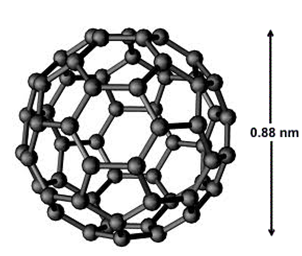

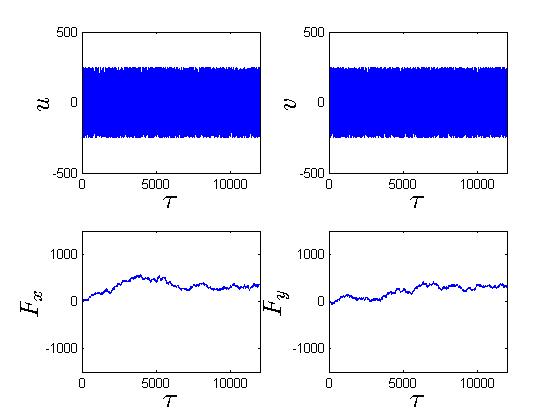
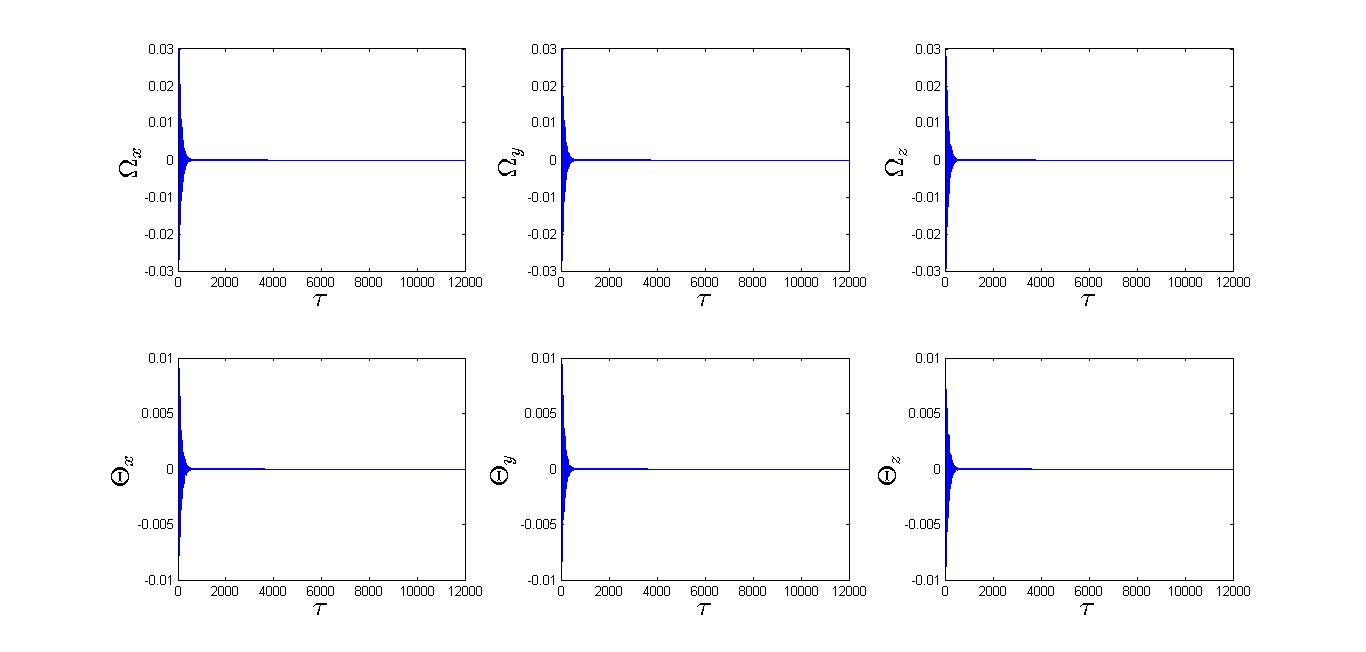
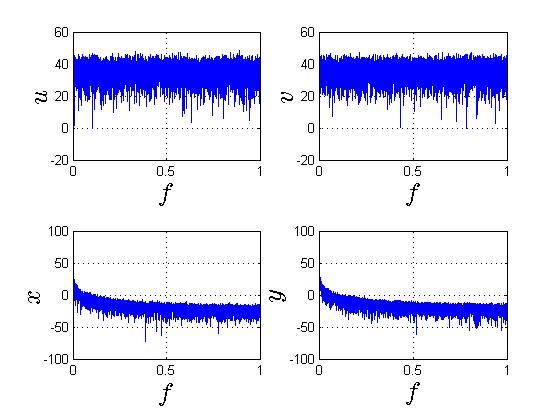
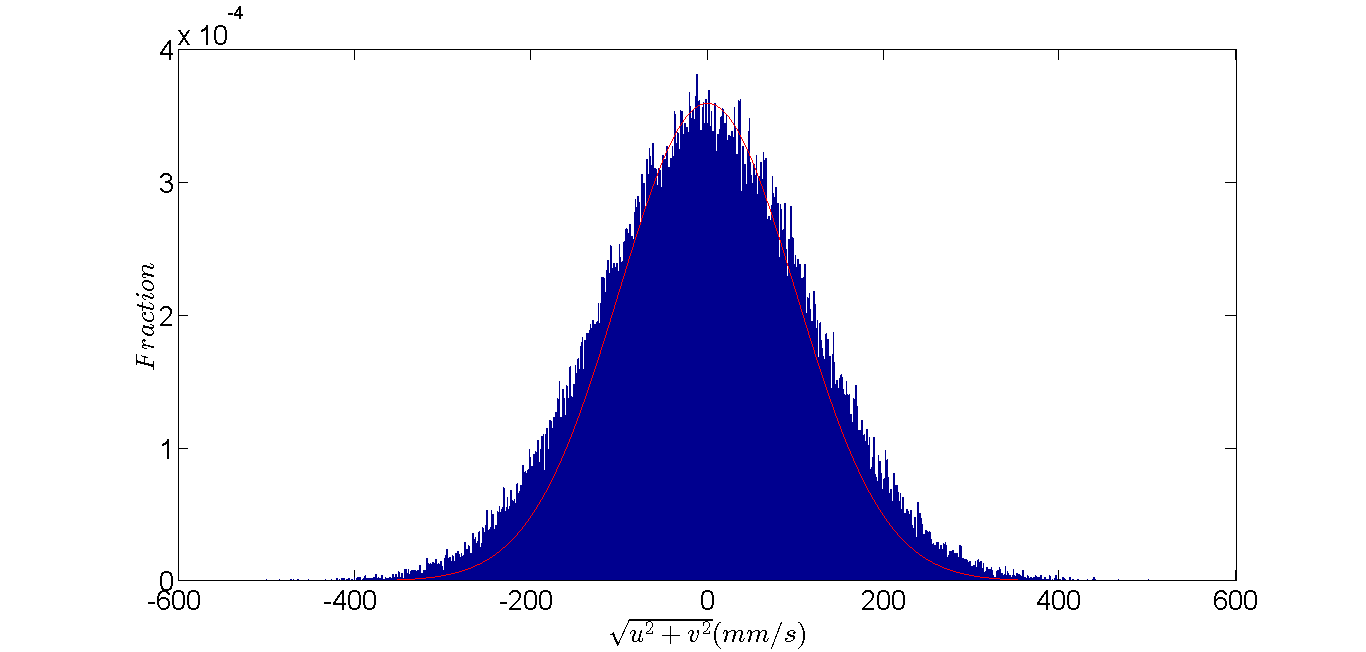
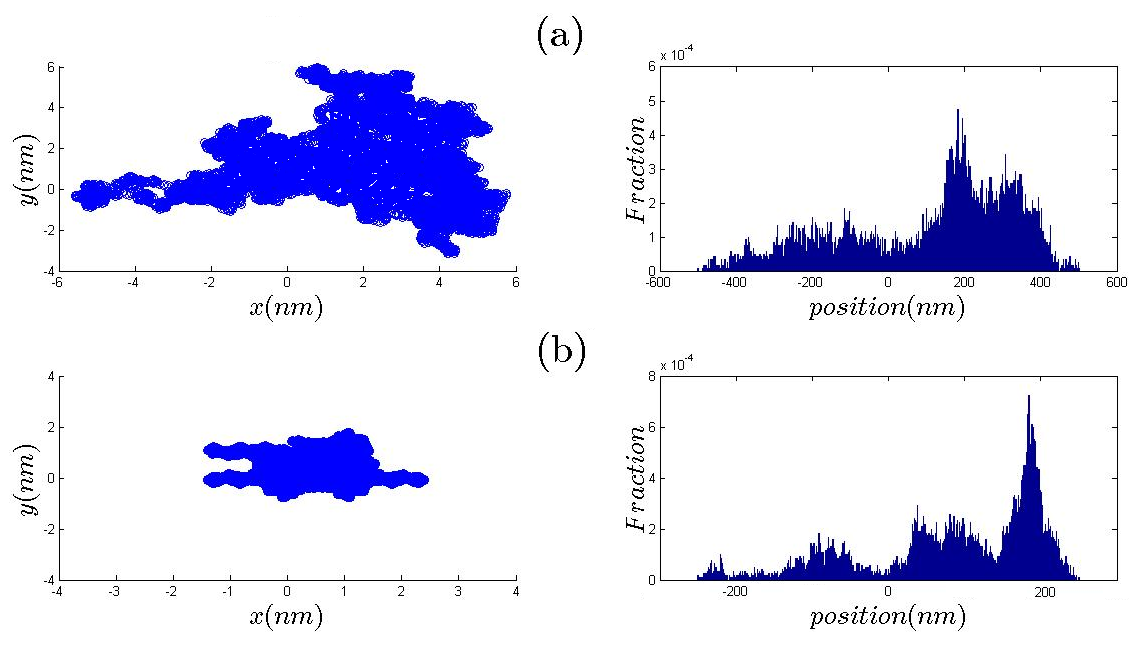


 Abstract
Abstract Reference
Reference Full-Text PDF
Full-Text PDF Full-text HTML
Full-text HTML